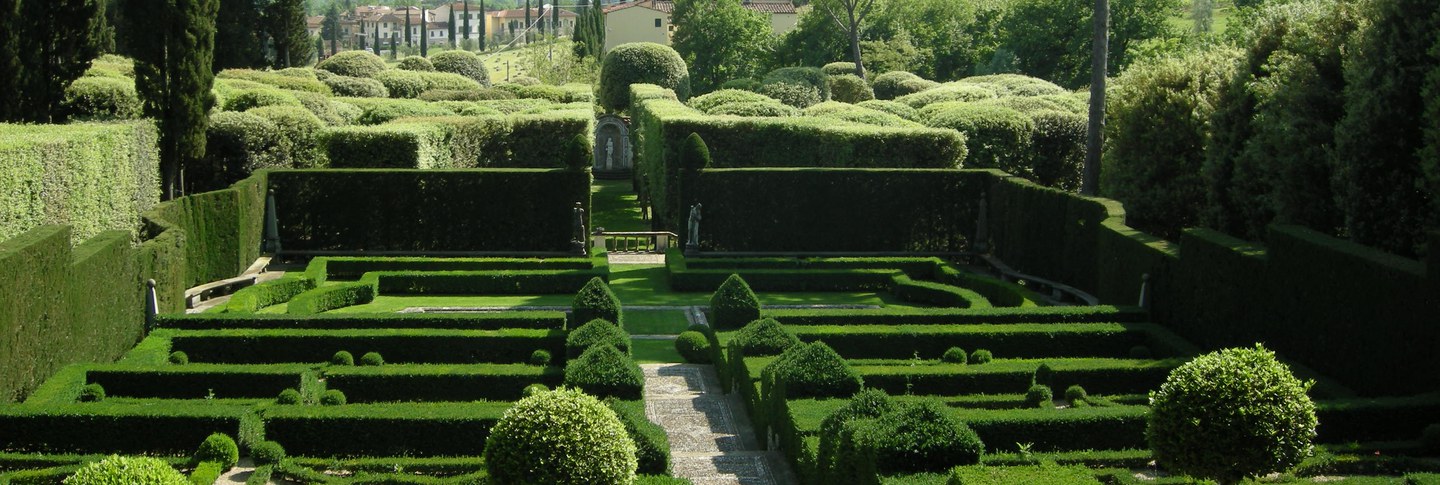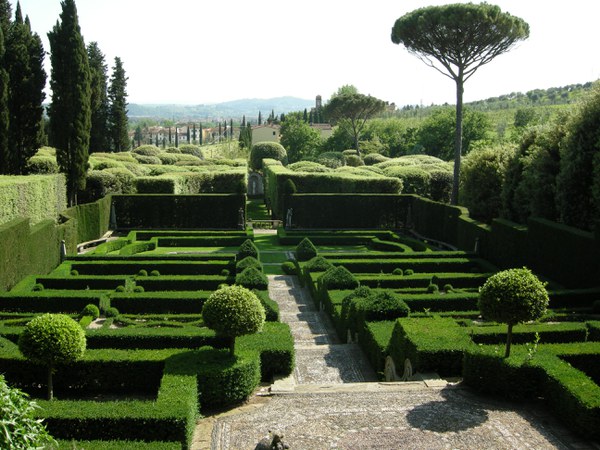The Dumbarton Oaks-Villa I Tatti Exchange was instituted in 2012 by the Director of Dumbarton Oaks, Jan Ziolkowski, and the Director of Villa I Tatti, Lino Pertile. The aim is to enable staff members of either institution to spend one or two weeks at the other, in order to advance a project, share knowledge, or engage in a collaboration. The first Dumbarton Oaks beneficiaries of the exchange, James Carder and Shalimar White, share their experiences:
Shalimar White
During the week of June 17th, I participated in the Dumbarton Oaks-Villa I Tatti staff exchange by visiting with colleagues in the Biblioteca Berenson. It’s hard to overstate the physical beauty of I Tatti. Even more impressive - to an art librarian with an academic background in Late Medieval and Renaissance Italian art history - are the ordered ranks of boxes that lined the walls of the Fototeca. Developed by I Tatti’s founders, Bernard and Mary Berenson, the Fototeca houses approximately 250,000 photographic prints, documenting Italian paintings and drawings from 1250 to 1600. Many of them bear the Berensons’ original notations, whether remarks on a work’s location, provenance, dating, or attribution – precious information for scholars consulting the archive. Since 2007, Fototeca staff have been engaged in a comprehensive inventory of its holdings. This essential work of collection management led to a special initiative to digitize and catalog the “Homeless Paintings of the Italian Renaissance.” “Homeless” was Berenson’s classification for paintings whose current location was unknown, including works that have been lost, destroyed, stolen, or sold to anonymous collectors. To date, approximately 16,000 photographs (c. 32,000 digital images representing both the rectos and versos of each print) have been made available through Harvard’s Visual Information Access (VIA) system. Since 2010, staff in the Image Collections and Fieldwork Archives (ICFA) have also been compiling an inventory of our holdings, an effort to gain full intellectual and physical control over the approximately 500,000 items in our photographic and archival collections related to Byzantine art, architecture, and archaeology. For ICFA, it was immensely beneficial to study the Fototeca’s established inventory program and learn about the workflows and processes in use directly from colleagues at I Tatti. It was also fascinating to immerse myself for a week on campus and learn about other exciting initiatives related to the Library, digital projects, social media, and the fellowship program. I am grateful to the directors of Dumbarton Oaks and Villa I Tatti for making the trip possible, as well as to wonderful colleagues at I Tatti, who so graciously and generously made themselves available during my visit - in particular, Michael Rocke, Director of the Biblioteca Berenson.
James N. Carder
For five days during the last week of May, I participated in the exchange program between Dumbarton Oaks and the Villa I Tatti – the Harvard University Center for Renaissance Studies in Fiesole, near Florence, Italy. I Tatti was the 1959 gift of the Renaissance art connoisseur Bernard Berenson (1865–1959) to Harvard, and much like Dumbarton Oaks, I Tatti’s buildings, interiors, gardens, and art collection are stunning. Also like Dumbarton Oaks, the Center’s library facilities (the Biblioteca Berenson) and archives (including Berenson’s photographic archive, the Fototeca) are first-rate. The staff at I Tatti is welcoming, gracious, and helpful, and they made certain that I was included in the communal gatherings for morning coffee, mid-day dinner (served with wine from the I Tatti vineyards), and afternoon tea. After library hours, I walked “home” down the terraced gardens to a commodious apartment, complete with a terrace and a view over the Tuscan hills. For five days, life was very good!
I was interested to go to I Tatti to have the opportunity to read Berenson’s voluminous correspondence with Mildred and Robert Woods Bliss, Elisina and Royall Tyler, and their mutual friends, including Edith Wharton. This was greatly helpful in corroborating and supplementing data and chronologies for the Bliss-Tyler correspondence project, which Rob Nelson and I have prepared for publication on the Dumbarton Oaks web site. For example, in November 1936, Royall Tyler sent Berenson a first-hand report of Thomas Whittemore and the Byzantine Institute’s uncovering of the mosaics at Hagia Sophia, a report much like the one that he sent to Mildred Bliss. And the correspondence shows that Mildred Bliss herself had the opportunity to visit Hagia Sophia. She wrote Berenson on October 21, 1947:
I [saw] ‘Aya Sofia on Monday! No work of man that I have seen conveys such a sense of space & not even a humming bird soars & floats more easily. What that great church must have been before those Vulcherous Latins looted it!
She concluded her letter to Berenson by stating:
You are part of a life that nourishes & enriches my own during the happy years when travel was taken for granted before the Barbarians broke our hearts & reduced to rubble all the Ivory Towers. I hold tenaciously to old friendships & to clasp your hand over time & space & to dip, even for a moment, into the ordered loveliness of I Tatti was something essential, long craved.

